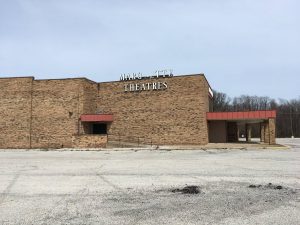With Sears Canada announcing the liquidation of all its stores, the death of the North American Shopping mall is more apparent than ever. Once called the “church” to America’s Capitalist religion, more and more former consumer epicenters are falling into disrepair.

https://imgur.com/a/bK9bP#Ocp4lYw
As a kid I remember how excited I would get when my family would go to the mall- the term “going shopping” meant more than just what the name itself implied. In addition to buying clothes, we would buy food at the food court, have pineapple buns from the asian bakery, and play in the kids-area. Going to the mall was more than just a shopping activity: it was a day-long event.
Nowadays with Millennials replacing Boomers as the largest consumer-segment for brick-and-mortar retail stores, the “going shopping” experience I had when I was younger is now permanently a thing of the past. The fact is, the sub-urban shopping centre experience has not aged well with time.
While the previous generation were happy to spend their days at the mall, the same value propositions that malls offered to the Boomers did not transfer well to the Millennials. The current majority consumer-segment values efficiency and affordability- none of which are the strong points of shopping malls. Teens no longer want to walk across the mall in order to pick up a single item, and as a result, brick-and-mortar malls have seen their consumer-base rapidly dry up and flock towards online-retailers like Amazon and low-cost, high quantity factory outlets.

https://imgur.com/a/bK9bP#Ocp4lYw
The growing shortage of mall shoppers is causing large “anchor stores” like Sears to go out of business. Decreased foot-traffic coupled with internal business mistakes such as Sears’ inability to adapt to the new generation of shoppers has caused many anchor stores to pull out of malls, leaving a vacuum-like hole in where they used to be. Because anchor stores generate so much foot traffic themselves, when the anchor store is removed, surrounding name-brand stores are less inclined to renew their leases due to the decreased real-estate value of their stores. Gradually the mall becomes cluttered with small B-tier businesses, further decreasing the attractiveness of the mall, eventually leading to the mall’s closure due to the revenue gained not being able to match the colossal fixed costs necessary (electricity, water) to run the building.
Once the king of capitalism, the North American shopping mall business model seems to be headed to the gutter due to its inability to modernize and adapt to current consumer needs. Personally, after seeing the death of Richmond’s Lansdowne mall for myself, I believe it is not far-fetched to say that in 25 years, shopping malls will be all but extinct.
Word count: 443
References:
https://www.worldfinance.com/markets/the-rise-and-fall-of-the-us-mall
http://www.businessinsider.com/dying-shopping-malls-are-wreaking-havoc-on-suburban-america-2017-2
https://broadly.vice.com/en_us/article/ypa7jj/the-rise-and-fall-of-the-american-shopping-mall
https://np.reddit.com/r/dayton/comments/6m250y/dayton_mall/dk00eqc/?context=3
http://www.cbc.ca/news/business/sears-closures-impact-small-communities-1.4353011
https://www.huffingtonpost.com/robin-lewis/malls-are-the-new-anchors_b_5545761.html





